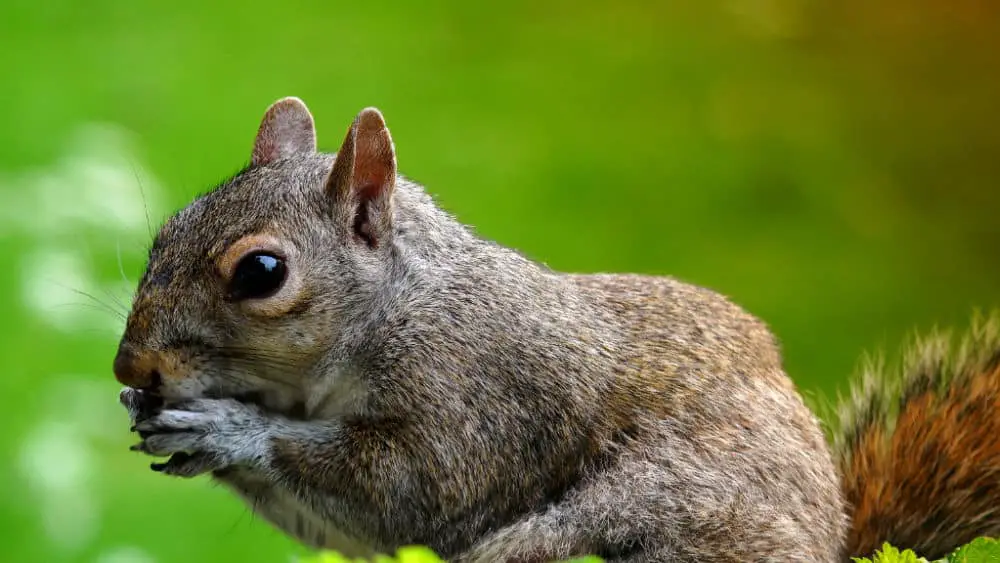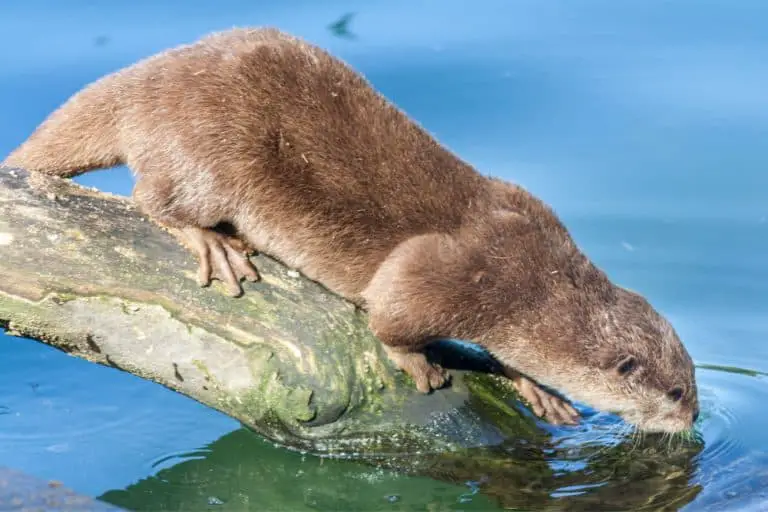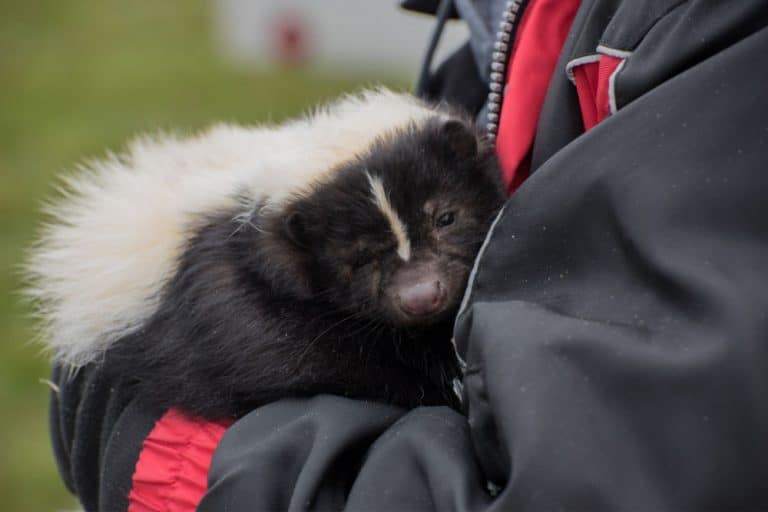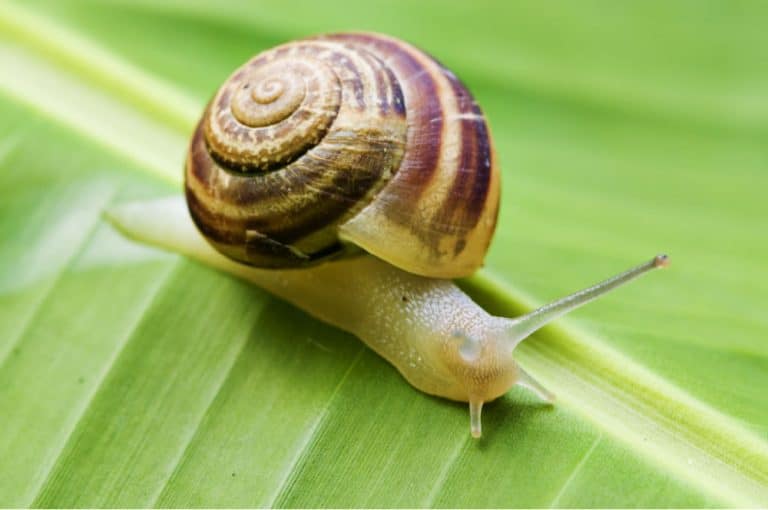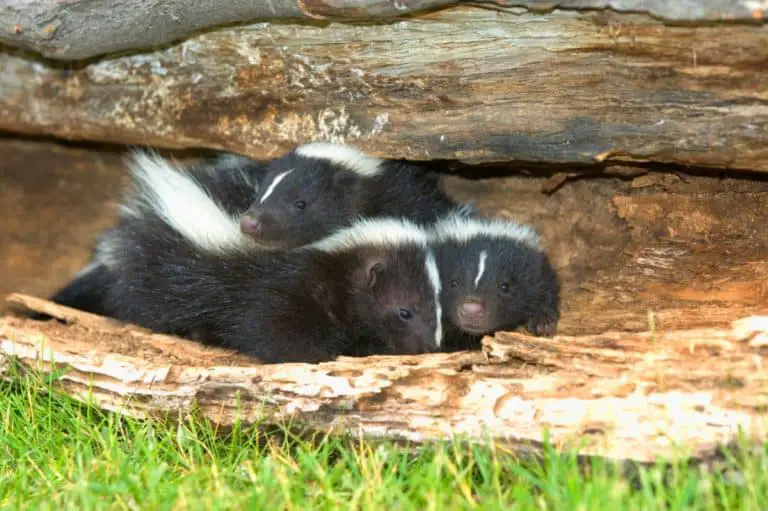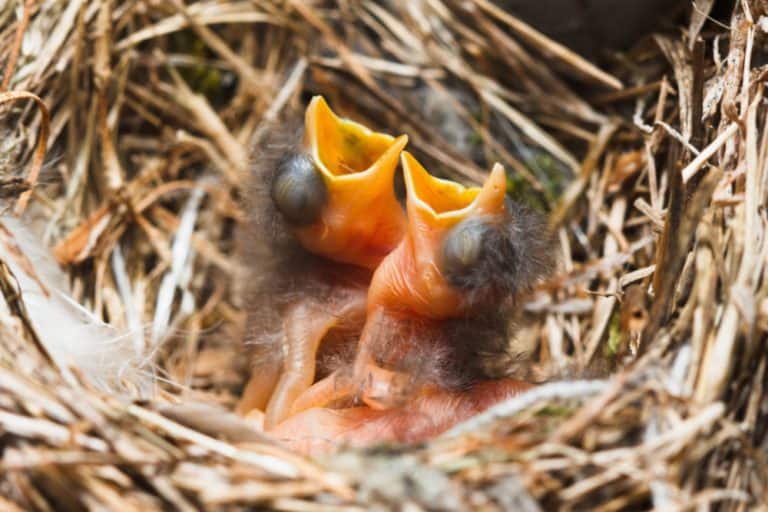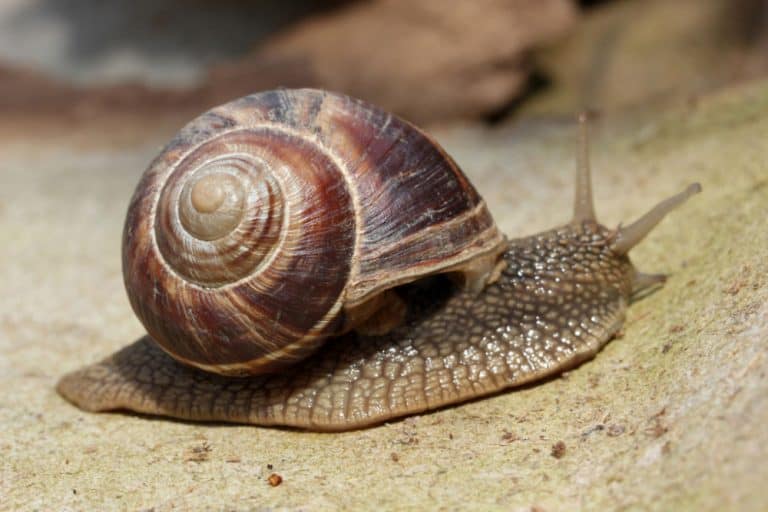Raising Indoor Pet Squirrels: What Do Pet Squirrels Eat?
Squirrels are furry, adorable creatures, and though they thrive in the wild, it’s no surprise that some people choose to keep them as pets. As such, pet squirrel owners need to take full responsibility for their dietary requirements to meet these quick critters’ high energy demands. Squirrels held captive also need to stay healthy and maintain good body weight. That said, what do pet squirrels eat?
What Do Squirrels Eat?
Squirrels are primarily herbivores, meaning that they eat a variety of plants, like seeds, nuts, conifer cones, fruits, fungi, and green vegetation. However, when faced with a lack of food choices, they tend to become more opportunistic omnivores. They’ve also been known to eat small birds, smaller rodents, young snakes, bird eggs, and insects. Squirrels have also adapted to eating food they find in human habitats like birdseed, cereals, pet food, cheese, and trash.
Like all other pets, meeting the nutritional requirements of pet squirrels is not just about feeding a variety of foods. It is rather about providing the right amount of appropriate foods. Squirrels can subsist on pre-made food designed for rodents, but this should be supplemented with fruits, fresh foods, vitamin supplements, nuts, and calcium-rich foods.
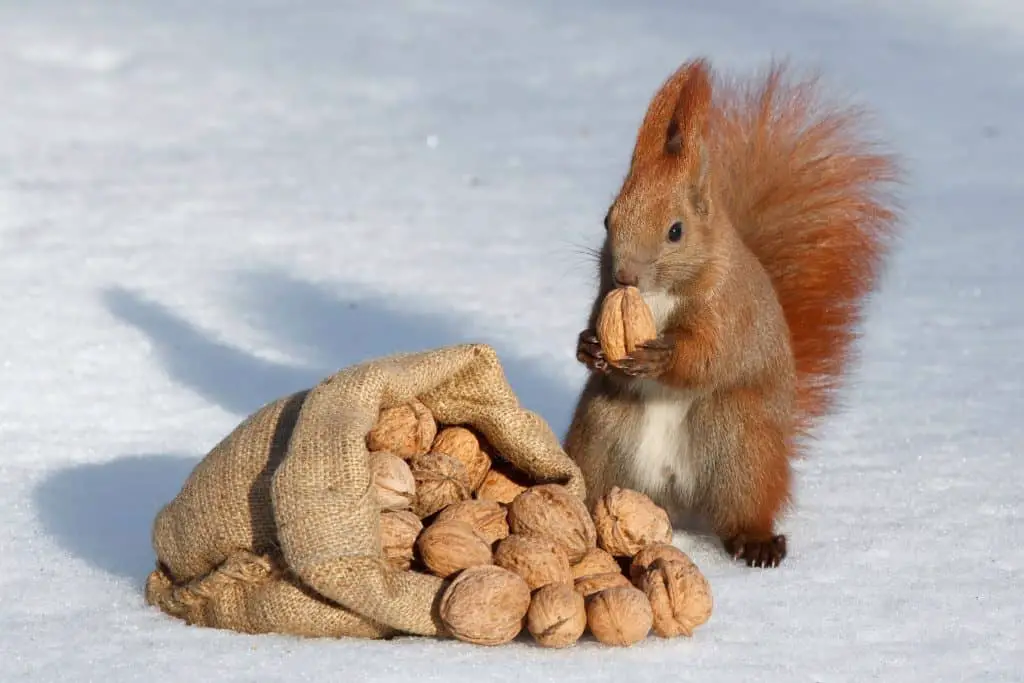
Pet Squirrel Food List
Here’s a detailed account of a pet squirrel’s dietary composition:
Rodent Blocks
These are pre-designed blocks made of rodent-friendly foods. They are a good primary source of a balanced diet since they meet the nutritional composition needed in squirrels, mice, guinea pigs, and hamsters. They also meet daily energy requirements and can therefore make up 75% of a pet squirrels diet. Moreover, they are ready to eat and come in vegetarian varieties too.
Depending on the weight, age, and variety of foods a squirrel is fed, she can be given 2-4 blocks a day. Unfortunately, unless a squirrel was introduced to rodent blocks at an early age, they might find the taste repulsive. Therefore, it’s very possible for an adult squirrel to reject feeding on rodent blocks completely, especially if she has a variety of other foods. If this is the case, start with vegetarian blocks that contain sugars and molasses to improve the taste, then gradually introduce the rest.
Vegetables
Low carbohydrate vegetables are also great choices for squirrels. Give 2-3 thumb-sized pieces of cabbage, zucchini, sweet potato (raw or cooked), sugar snap peas, squash (all types; raw or cooked), pumpkin, okra, mushrooms (1 per week), green beans, cucumber, cherry tomatoes, cauliflower, bell peppers (green, red, or yellow), or asparagus. Note that vegetables with a high calcium content are highly recommended. They include squash (butternut; raw or cooked), watercress, romaine lettuce, radishes, swiss chard, dandelion greens, parsley (fresh), beet greens, and arugula. For these, feed 5-7 thumb-sized pieces per day.
Note that not all vegetables are great. Some are off-limits, particularly yams, sprouts, potatoes, palm hearts, onion, garlic, fresh corn, and dried vegetables. Avocados are also high in fat, and the skin and pit are toxic to squirrels. That said, the best way to ensure that the squirrel feeds on the right vegetables is to stick to this manual, and when introducing anything besides the mentioned varieties, consult with a specialist.
Other Fresh Foods
Vegetables are a great source of energy and vitamins, but other fresh food varieties could benefit pet squirrels. Together, fresh foods and vegetables should comprise 25% of the daily diet. Some fresh foods include eggs, edible flowers like carnations, pumpkin seeds, sesame seeds, and other native foods around the locale. Wild-born squirrels feed on foods native to the area, so these will come in handy in making a comprehensive diet. When picking plants and flowers, caution should be exercised to ensure that they are free of pesticides, dirt, and disease.
Fruits
Fruits maintain a functional digestive system and provide vitamins to squirrels. As such, wild flying squirrels are known to jump from tree to tree to feed on fruits growing around their surrounding. Captive animals should also be fed a fruit-rich diet, by feeding 2 slices of different fruits daily. In fact, S & S Exotic Animals advocate for a fruit rich diet, whereby fruits make up to 40% of a pet squirrel’s diet. Some of these include watermelon, strawberries, pineapple, pears, peaches, papaya, nectarines, navel oranges, lemon, lime, kiwi, honeydew, grapefruit, cherries (sour), cantaloupe, apples, and blackberries.
Some fruits like cherries (sweet), passion fruit, mangos, bananas, and grapes are somewhat high in sugars and starches and should therefore be limited. Additionally, watch out for fruits whose seeds are toxic. Southern flying squirrels are also particularly fond of plums, apples, pears, and berries. In fact, for such flying squirrels, their diet should purposefully mimic the kind of diet they would feed on in the wild. Lastly, avoid prunes, fruit juice, persimmons, dates, and any type of dried fruit.
Seeds and Nuts
Stems, leaves, acorns, hickory nuts, tree barks, and nuts available in the natural setting summarize the question of ‘What Do Pet Squirrels Eat?‘ before domestication. These may, however, be complex to harvest or confusing in that one may not know which ones are toxic and which ones are safe. If this is the case, simply opt for nuts and seed bought from the grocery store or products that mimic nuts, such as pellets. Feed 2 nuts or seeds a day, preferably in their shells.
Peanuts provide basic nutrition, then pistachios, pecans, English walnuts, macadamia nuts, and hazelnuts in the order of the lowest to highest nutritional value. Almonds, however, are the healthiest of them all. Whole roasted pumpkin seeds and acorns are also great options. When it comes to seeds and nuts to avoid, they include pine nuts (they cause severe calcium loss), dried corn, sunflower seeds, and cashew nuts.
Meat
Most people are quite shocked to find out that squirrels are opportunistic omnivores, not strict herbivores. Most people asking ‘What Do Pet Squirrels Eat?’ often expect vegetables, and nuts. They obtain their protein from scavenging on carrion, eggs, young mice, insects, and small birds. Wild flying squirrels are especially fond of meat than all other kinds of tree squirrels. Pet squirrels can thus be fed mealworms, eggs, insects, and small birds to meet their protein demand.
Water
Just like human beings, water is important in the body’s metabolism in squirrels. Squirrels (just like most living beings) are quite fond of water, and should therefore be provided with clean water round the clock. When they are pregnant, lactating, or during hot days, their water intake goes high, so their daily provision should also increase. That said, provide fresh water in a shallow dish.
Calcium Supplements
Calcium is responsible for strengthening bones and teeth, particularly for these strong furry animals who spend the majority of their life gnawing on tree bards, crushing nuts, and jumping from tree to tree. Regrettably, some squirrels are nocturnal animals, which means they are mainly active at night and as such, they risk calcium deficiency. In the wild, they gnaw on antlers and bones to meet their calcium needs. When held captive, calcium needs to be included in their diet.
Pet squirrel owners can provide calcium supplements by feeding eggshell powder, animal grade bonemeal powder, animal bones made for dogs, and chew bones such as cuttlebones sold in pet stores for birds. Calcium supplements can be mixed with water and food. 1/2 teaspoon a day packs plenty of calcium. When supplements are unavailable, simply boil, dry, and grind eggshells in a clean spice or coffee grinder and make some homemade eggshell powder.
Vitamin D Supplements
Vitamin D goes hand in hand with calcium since it helps the body synthesize calcium. A pet squirrel can meet the daily vitamin D requirement by basking in the sun for half n hour each day. If this is not possible, vitamin D supplements should also be bought.
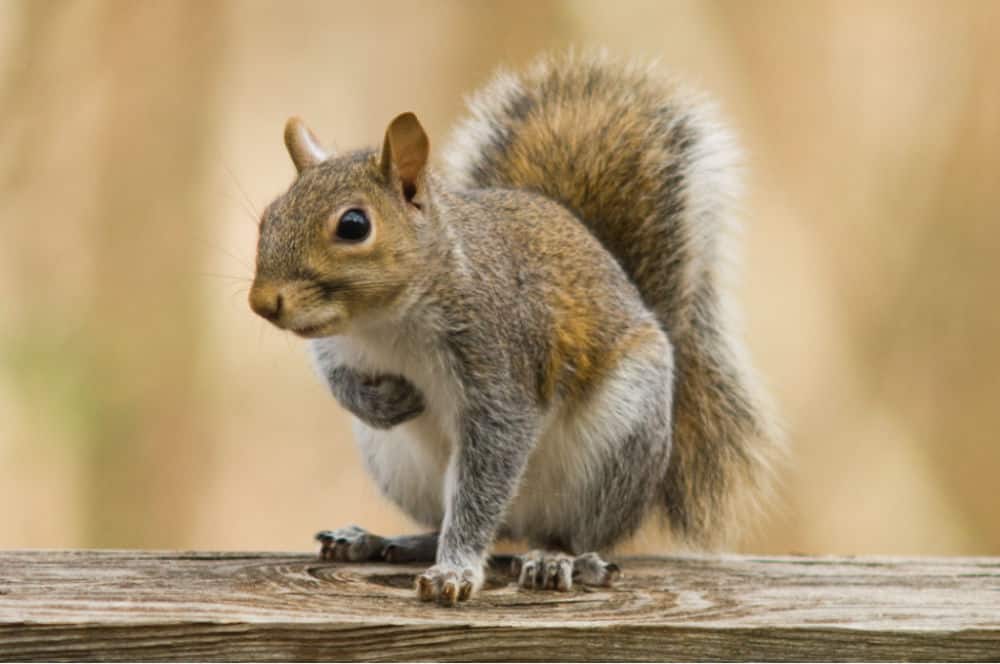
Foods to Avoid
Now that pet owners are familiar with what to feed their beloved pet squirrels, the list of foods to avoid concludes the dietary composition required. It would not be sufficient to answer what do pet squirrels eat without answering what they should not eat as well.
Besides the aforementioned foods, pet owners should also avoid all kinds of human processed foods such as breakfast cereal, pretzels, cookies, bread, and pasta. Artificial sweeteners are also out of bounds as well as all types of beans save for sugar snap peas and green beans. Seed mixes also contain a high amount of fat, and should therefore be avoided.
Note that baby squirrels have different dietary needs. They should be fed formula feeds, particularly puppy milk formula powder mixed at 1 part power and 2 parts lukewarm water. This should be their diet till they are 6-7weeks old after which they can be weaned with vegetables, fruits, nuts out of the shell, and apples. After 9-10 weeks corn and sweet potatoes can be introduced. Nevertheless, baby squirrels are best brought to squirrel rehabilitators where they stand the best chance of survival.
Other Related Questions
1. When should I feed my squirrel?
While in the wild, most squirrels are usually opportunistic feeders, feeding whenever they find food around them, particularly during the day. That said, daytime feeding is convenient for most owners. This is because the pet squirrel will feed based on when she is fed, so choosing the time that works for you is ideal. Note that since captive squirrels are less active, they should be fed fresh foods once or twice a day as snacks, and around 2 rodents blocks per day to avoid excessive weight gain.
2. Why does my pet squirrel look lethargic and in pain?
It may be suffering from Metabolic Bone Disease, an illness that stems from a poor diet, especially one that is short of Vitamin D. In such a case, provide enough sunlight each day(30 minutes) or use full-spectrum light bulbs to provide Vitamin D.
3. How often should I remove food remains and uneaten fruit?
Every 12 hours, to prevent odor and bacteria.

